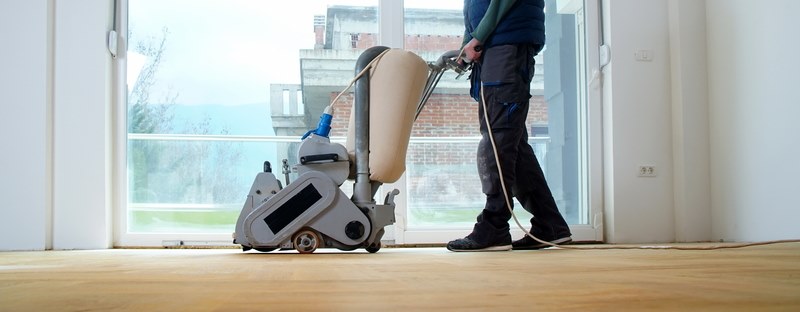Published on 30 April 2019
Posted in
It can be challenging to know when your hardwood flooring needs sanding, wooden floors can be very deceptive. Stains, scrapes and dings on your hardwood flooring do not necessarily mean that it needs to be refinished and a surface that looks really smooth and has no marks may need refinishing.
Good question, it’s not as difficult as you may first believe. First things first you should locate the section of floor that gets the most traffic throughout the day and look if the floor is worn as this is the area that would need it the most.
Pour a small amount of water onto the section of the wood you believe is damaged and needs refinishing. If the water forms into droplets on the surface of the wood, then your floor is perfectly fine, this is because of the varnish on top of the wood, it prevents liquids and other spillages from damaging the surface. On the other hand, if the water penetrates the surface of the wood then it’s time to gather your tools and repair your floor.
Scratches, a key indicator that your floor needs sanding. When your floor becomes scratched it can reduce the aesthetic look of your floor, creating an untidy atmosphere. Scratches can also remove the protectants which are applied to the top of your floor, to prevent further damage and increase the durability of your floor. The wooden floor might be turning grey, this is when the top layer of wood has tinted over time. This also could be due to spillages that haven’t been sorted straight away. Some discolouration can be caused by the sun too, you may be able to see a big difference in the colour of the wooden floor by windows compared to the floor in the corner, not in direct sunlight. When your floor starts to become “patchy” its time you grab a sander and get to work.

The structure of a sander is very similar to that of a milling machine. There are different types of machinery on the market, from the most remote to the most innovative. Performance changes, but the structure remains unchanged.
The rotating instrument, inserted inside the machine, moves with rotary and oscillating movements and intervenes on the surface to be treated by means of blades, called diamond, corundum or silicon carbide. Which carry out a constant and variable pressure on the damaged part. This pressure is also approached in the presence of a strong liquid stream in order to quickly remove all those waste particles deriving from the polishing process. Precisely for this reason, it is advisable to proceed with the sanding of a surface keeping the windows of the rooms open and sealing the internal doors, in order to prevent dust from spreading throughout the house. An average sized room should only take about a day to sand and a further day to finish the floor with varnish or oil. After applying the varnish or oil it’s advised the floor isn’t walked on to allow the floor to dry properly.
We hope that this blog has been helpful, and you now have a few handy tips for knowing when your floor needs sanding, if you have any questions please feel free to contact us on 02084276604 or head on over to our website.
2023 ©Floor Sander Hire London. All Rights Reserved. Company No: 04545051
Web Design and Marketing by Loop Digital